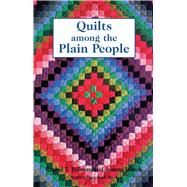
What is included with this book?
| Beauty Among the Austere | p. 4 |
| Amish Quilts From Long Ago | p. 24 |
| Sunshine and Shadow | p. 25 |
| Diamond in Square | p. 28 |
| Bars | p. 30 |
| Contemporary Patterns | p. 32 |
| Log Cabin | p. 34 |
| Double Wedding Ring | p. 38 |
| Dahlia | p. 41 |
| Lone Star | p. 42 |
| Fan | p. 45 |
| Tumbling Block | p. 46 |
| Distelfink | p. 50 |
| Grandmother's Choice | p. 52 |
| Crazy Quilt | p. 54 |
| Friendship Quilt or Album Quilt | p. 56 |
| Horn of Plenty | p. 58 |
| Colonial Star | p. 60 |
| Lancaster Rose | p. 62 |
| Rose of Sharon | p. 65 |
| Dresden Plate | p. 66 |
| Grandmother's Flower Garden | p. 68 |
| Presidents Wreath | p. 71 |
| Wandering Foot or Turkey Tracks | p. 72 |
| Drunkard's Path | p. 74 |
| Old Country Tulip | p. 75 |
| How to Make a Quilt | p. 76 |
| Glossary | p. 88 |
| Readings and Sources | p. 92 |
| Index | p. 94 |
| The Authors | p. 96 |
| Table of Contents provided by Ingram. All Rights Reserved. |
The New copy of this book will include any supplemental materials advertised. Please check the title of the book to determine if it should include any access cards, study guides, lab manuals, CDs, etc.
The Used, Rental and eBook copies of this book are not guaranteed to include any supplemental materials. Typically, only the book itself is included. This is true even if the title states it includes any access cards, study guides, lab manuals, CDs, etc.
Excerpted from Quilts among the Plain People by Rachel Thomas Pellman, Joanne Ranck, Rachel T. Pellman
All rights reserved by the original copyright owners. Excerpts are provided for display purposes only and may not be reproduced, reprinted or distributed without the written permission of the publisher.